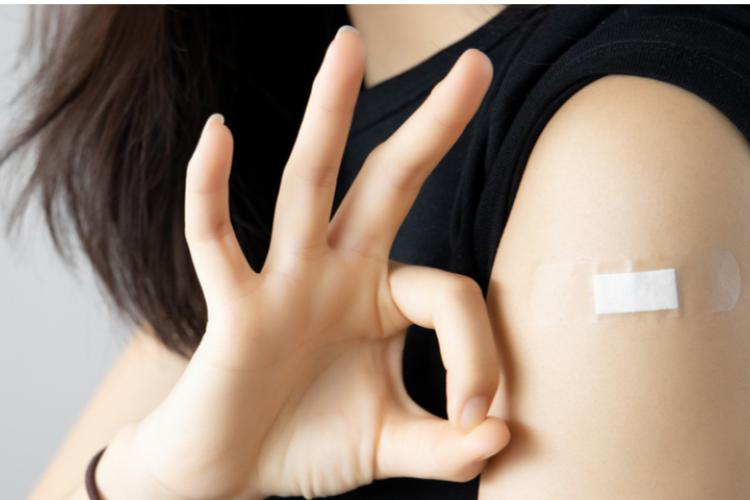Vaccines based on brand new delivery systems or manufacturing technologies need an all-hands approach

Every few weeks, news of a new COVID-19 vaccine hits the headlines. While the world now mostly focusses on the practicalities of mass distribution and immunisation, it’s useful to take a step back and consider the scale of collaboration that is necessary along the way to producing these vaccines, some of which are based on brand new technologies.
Development, testing, and manufacturing of new vaccine technologies, along with generating data on safety and protection, are areas in which the pharma industry has been keen to collaborate.
The Janssen/Johnson & Johnson COVID-19 vaccine, which is expected to be authorised by the EMA this month, is based on a vaccine technology platform called AdVac®, the company’s proprietary technology that also forms basis of their Ebola vaccine. Through the EBOVAC project, IMI funded clinical studies that provided the evidence for the regulators on the safety of that technology, and it is a good example of IMI’s enabling power.
The ZAPI project created a new platform technology that is ready to produce vaccines and monoclonal antibodies to counter emerging or remerging virus outbreaks within months of the first case. ZAPI turned out to be visionary; the pharma companies in the consortium had chosen targets that were (at that time) not market-sensitive, but simply models for identifying and producing antigens. Their chosen models (among them, the coronavirus MERS) meant that their work was accelerated by the COVID-19 crisis and the platform, which was built for maximum flexibility, is now being used to develop COVID-19 therapeutics. The stakeholder model of IMI was a huge benefit here, allowing the project team access to regulatory guidance.
Correlates of protections and safety – major gaps
The VSV-EBOVAC and VSV-EBOPLUS projects identified correlates of protection in adults and children vaccinated with Merck’s VSV-ZEBOV Ebola vaccine, which was approved by American and European regulators. Identifying correlates of protection – the signs in the body that indicate a vaccine is working - remains one of the domains in vaccine science that is under-researched, and collectively defining this evidence does not in itself confer a competitive advantage to any one company. A PPP like IMI allows the industry to share data and speed up these processes. Then they can get back to competing on product development.
BIOVACSAFE demonstrated that it is possible to identify signals in the body that can predict long-term safety and tolerability of vaccines. That project also enhanced our understanding of the causes of adverse reactions. Another project, ADVANCE, created data analysis tools to link up a Europe-wide monitoring system to generate solid evidence on how vaccines are faring once on the market, which allows authorities to react quickly in case of adverse reactions. This, in turn, helps boost public trust in vaccines. The legacy of that project is the pan-European non-profit VAC4EU, whose members are currently monitoring COVID-19 vaccines through the Early-Covid-Vaccine-Monitor project, also funded by the European Medicines Agency.
We know that the immune response changes as we get older, so the VITAL project is working out the best strategies to address it. They are also calculating the economic costs of different strategies, which will help health systems prioritise how they spend public money. Again, this is not something that can be done in isolation. They have involved payers and regulators, alongside pharma and academia, in these discussions from the very beginning.
A magnet for partnership
FLUCOP are hoping to pave the way for tests that will predict the efficacy of annual flu vaccines, while PERISCOPE are studying the immune response of people of all ages – including pregnant women – for markers of an effective response to pertussis (whooping cough) infection and vaccination. The Bill and Melinda Gates Foundation approached us to collaborate on the PERISCOPE project, doubling the IMI contribution by adding 7 million euro to the pot. This demonstrates that IMI is a magnet for partnership, thanks to our credibility and increasingly recognised reputation for excellence.
IMI is proud of the part we played in the expected new of the authorisation of the Janssen/J&J COVID-19 vaccine, as we are of the Ebola vaccine, which was authorised for emergency use in 2020, and the Ebola diagnostic tests. However, product development is not our main mission; rather, IMI is an enabler. Our projects are focussed on areas of common concern to pharma companies who want to work together on a problem that poses difficulties for them all. This doesn’t usually directly translate into new products on the market. Rather, these collaborations are useful for breaking an impasse, allowing the science to move forward.
Of course, as with Ebola and COVID-19, occasionally an emergency presents itself that allows IMI to demonstrate the true power of the model of radical collaboration.
Related
Latest COVID-19 vaccine based on technology tested for safety & immunogenicity in IMI Ebola projects
EMA recommends COVID-19 Vaccine Janssen for authorisation in the EU
IMI-supported Ebola vaccine regimen gets green light
We’re living longer. What does that mean for existing vaccine strategies?
A recipe for the next disaster: a new, pan-virus methodology for ramping up vaccine production
